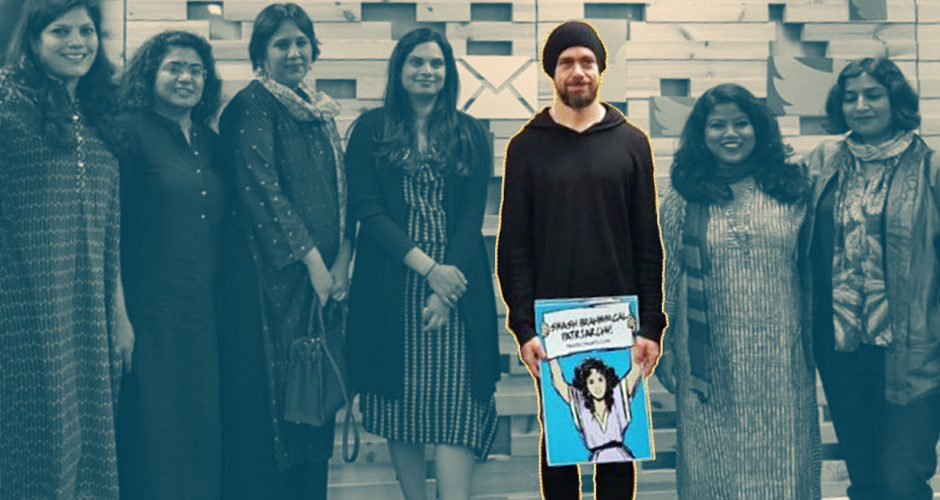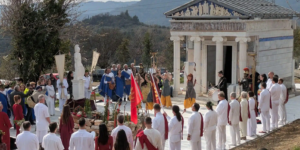A country is never fully defeated as long as its martial and intellectual leaders exist. A self-conscious imperialism undertakes to reduce them as its first important task. Muslims coming to India found brave, armed men and a brahmin class providing cultural and spiritual leadership. Dr. Ambedkar, quoting Muslim historians, says the first act of religious zeal by Mohammad bin Qasim, the first Arab invader, was circumcision of brahmins. “But, after they objected, he put all above the age of seventeen to death.”
When the Portuguese came, St. Xavier wrote to the king of Portugal, his patron, “If there were no brahmins, all pagans would be converted to our faith.” He hated them with hatred that evangelists alone are capable of. He called them a “most perverse people.” Brahmins became a persecuted people. Next the British came. They physically disarmed India. Then missionaries and orientalists led an ideological disarmament.
Rev. C. Buchanan said Indians should be baptized because “it attaches the governed to the governors.” They thought that brahmins came in the way of their dream of a baptized India. They started blackening and discrediting them. A brochure called The Book of Wisdom in 279 verses was widely circulated by missionaries under William Carey, touted as the father of the Indian press. It was one of the first he printed and is addressed to the “mean, despicable Brahmins.” The brochure promises hell for heathens and salvation through Christ.
The administration found brahmins to be the only “national” caste, held in much respect and capable of providing political leadership. This was enough. They fomented anti-brahmin movements in different parts of the country which are still very powerful in today’s secular India. Their fears were well-founded. Brahmins were the intellectual leaders of the Independence struggle.
Thus anti-brahminism was a construct of the last two centuries. And though learnt under the colonial-missionary aegis, it became an important category of future social thinking and political action. Brahmins began to be described as cunning, parasitic exploiters and authors of the iniquitous caste system. Much scholarship and intellectual labor was put into this thesis before it acquired its present momentum and currency. Anti-brahminism originated in, and still prospers in anti-Hindu circles. It is particularly welcome among Marxists, missionaries, Muslims, separatists and casteists of different hues. When they attack brahmins, their target is unmistakably Hinduism. They know their only chance is a disintegrated India.
The success of their mission is seen today in the brahmins’ new poverty. Sorokin describes brahmins as “world’s poorest aristocracy,” as a “caste of priests without church organization; teachers without state educational institutions; moral and social leaders without wealth, army and support of state organization.” It is a faithful description. In the past, their poverty was voluntary–renunciation was their way of life; but the old glory has gone. Their new poverty, not chosen but imposed by circumstance, is also ideological and cultural. In the past, brahmins were connected with temples which were also great centers of learning. When these were destroyed, brahmins became poor as well as illiterate.
A nation bereft of fighters now lost its teachers and thinkers. When the British came on the scene, they were already destitute. Independence brought no relief; they remained the poorest section in the country, followed probably by Rajputs. A Government study of incomes was made in Karnataka State.
The figures given in its Assembly in 1978 show that brahmins were the poorest, poorer than scheduled castes and scheduled tribes. Among the brahmins themselves, the poorest are those connected with Vedic learning, temple service and religious functions. At Tamil Nadu’s Ranganathaswamy Temple, priest’s monthly salary is Rs.3 (us8 cents, from Census Department studies) and a daily allowance of one measure of rice. The government staff at the same temples receive Rs.250 plus per month. But these facts have not modified the priests’ reputation as “haves” and as “exploiters.” In Marxist-secular social sciences, social facts do not change social theories. The destitution of Hindu priests has moved none, not even parties known for Hindu sympathy.
Traditional India is long-suffering and used to neglect. But how will a nation fare which treats its temples and priests so shabbily? And brahmins themselves should take up this challenge–not in any narrow spirit, but by recovering their old vocation, by fearlessly speaking for dharma and by again becoming brahma-vadins, God beings. The world needs it, and needs them.
By Ram Swarup
































